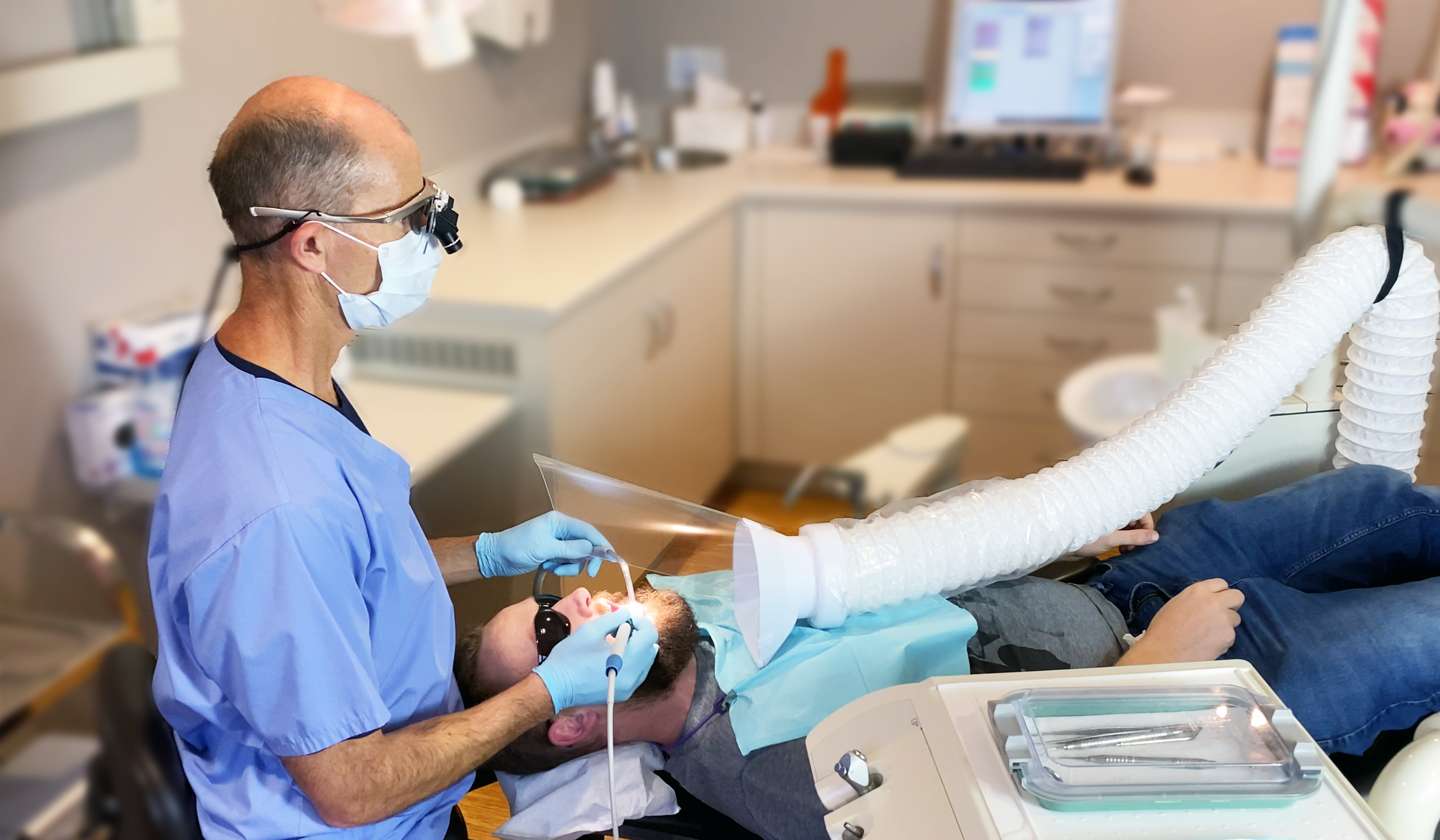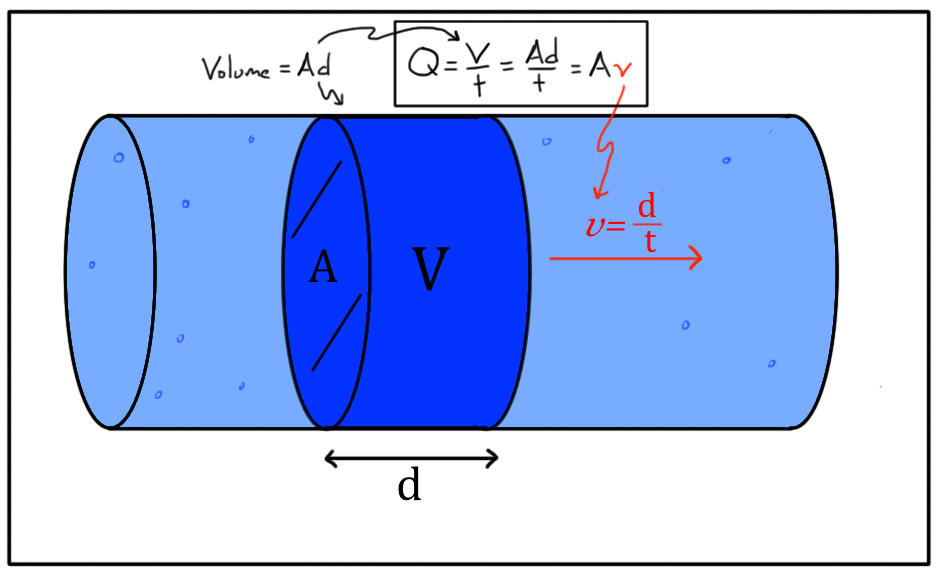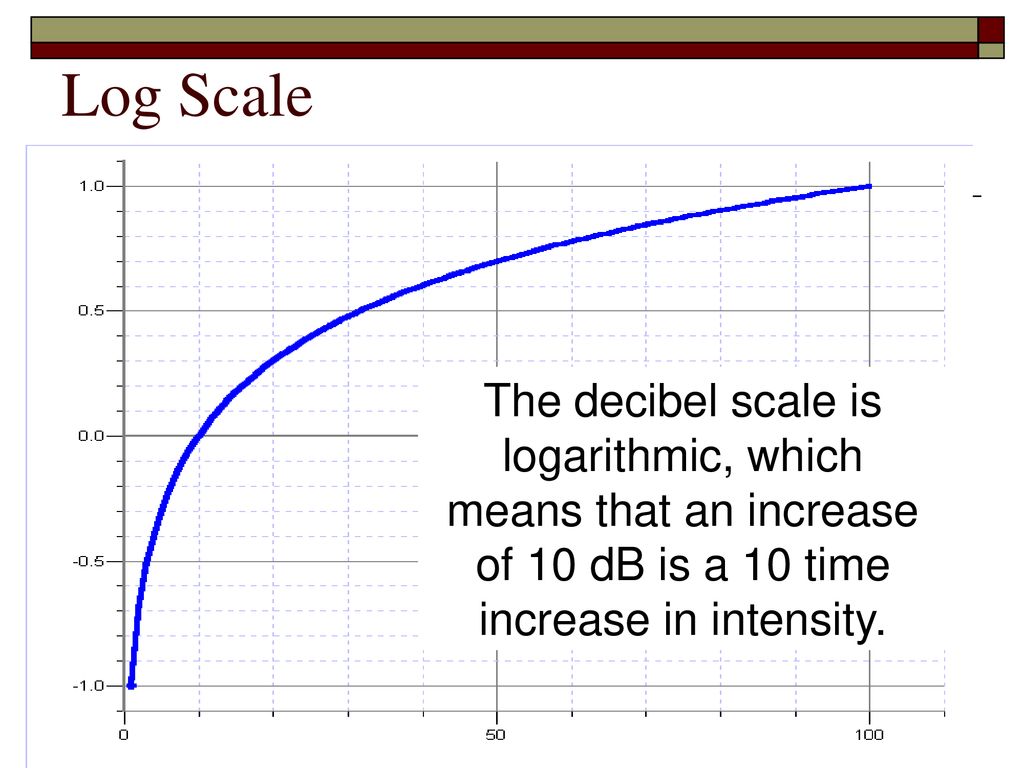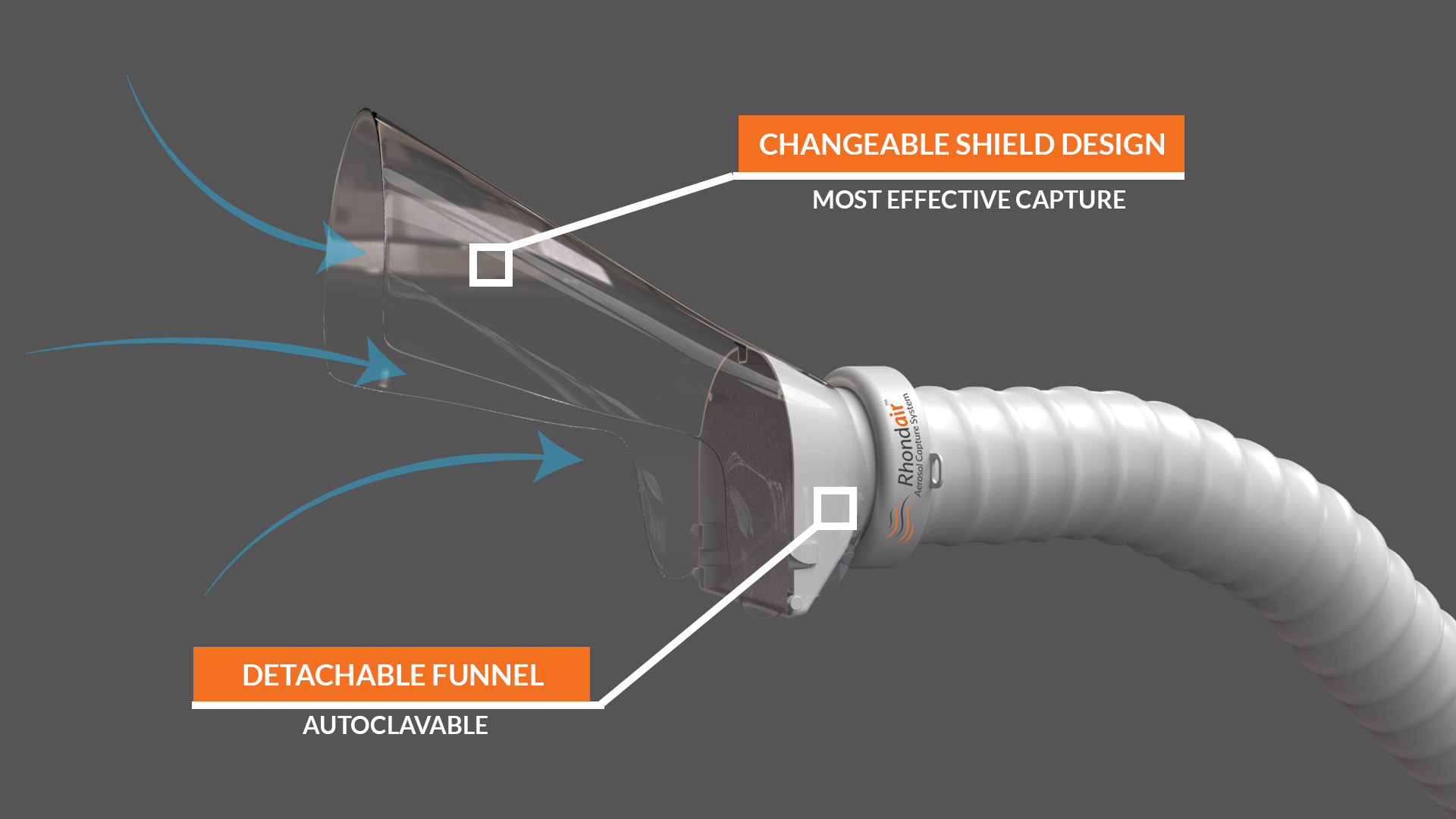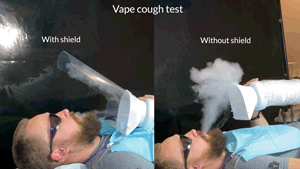Here at Rhondium, we’ve been busy behind the scenes developing the Rhondair Aerosol Capture System. On the off-chance you haven’t heard us shouting about it from the rooftops yet , the Rhondair Aerosol Capture System is designed to reduce the harmful impacts of dental aerosols by capturing them at the source.
Like you we’ve seen an explosion of articles, forum posts, and products all regarding aerosols and aerosol risks over the last few months. As a company that’s been developing their own aerosol capture system, we’ve been obsessing over the details lately too – and here are the big issues as we see them:
1. Apples and Oranges – The Devil is in the Detail
This is probably the biggest difficulty when trying to compare aerosol systems. The devil really is in the details on this one. Litres per minute, cubic feet per minute, cubic metres per hour, air speed, and suction in Kilo-pascals are all measurements that have been used to describe the effectiveness of these units. We’ve found it difficult at times to compare, and we’ve been making one!
No wonder they’re a tricky topic to make an informed opinion about. From our research, flow-rate volume is the best metric to use in this regard, which is why we list either litres per minute or cubic feet per minute in our materials. How fast material is moved to the filter isn’t necessarily as important as how much material is moved to the filter. Which nicely ties into the next point:
2. Multi-Directional Capture
Because the best filter in the world won’t matter if the material isn’t captured in the first place. Rhondair is the only system on the market today with a shield design like it, and that’s not by accident.
The shape of the shield is designed to create a powerful draw around the patient and the medical professionals working on them. Combined with our powerful fan, we can capture dental aerosols far more effectively than other capture shapes or systems which have the placement further away or off to the side of patients.
3. Decibels aren’t a Straight Line
This is another one that can be tricky to understand without a frame of reference. Decibels are measured on a logarithmic scale, like the Richter scale used for measuring the intensity of earthquakes. In the same way a magnitude 6 earthquake is much more damaging than a magnitude 5, decibels increase in intensity very quickly also. A good way to think about decibels is that each increase of 10 dB is 10 times as powerful. For example, 60dB is 10 times louder than 50dB, and 70dB is 10 times louder than 60dB. What this means though, is that 70dB is actually 100 times louder than 50dB.
So don’t discount a few decibels difference; on the decibel scale, just 3dB is all it takes for a sound to double in power.
4. Single use Components for Infection Control
You don’t reuse gloves after all.
The Rhondair’s disposable shield and autoclavable funnel designs allow for infection control measures to be easily incorporated into your practice workflow without blocking dental lights or impeding the work area. Set up and change out only takes seconds. The shields are also made from recyclable type 1 PET plastic and can be easily recycled or disposed of in standard medical waste.
We’re currently making new units as fast as we can to meet the global demand, so if capturing dental aerosols at their source sounds more appealing than trying to disinfect the room (and yourself) after the fact, find out more or reserve your unit now.
Part 2 of the series has now been released!
Until next time, stay safe.
The team at Rhondium.

